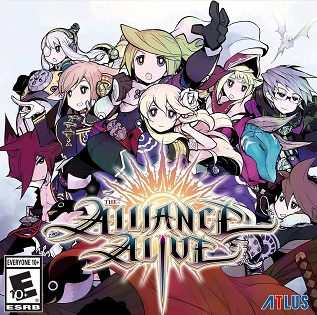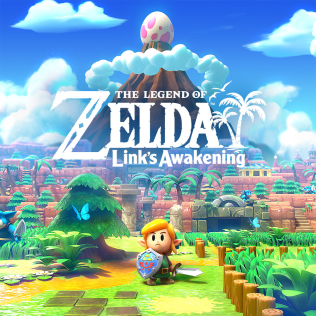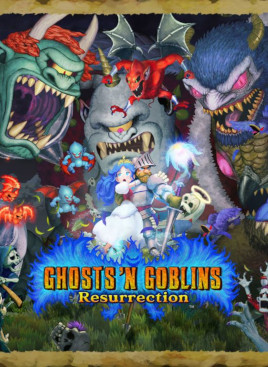
Dynasty Warriors is a series of Japanese hack and slash action video games created by Omega Force and Koei. The series is a spin-off of Koei's turn-based strategy Romance of the Three Kingdoms series, based upon the Chinese novel of the same name, which is a romanticised retelling of the Chinese Three Kingdoms period.
Rune Factory is a franchise of fantasy role-playing simulation games created by Yoshifumi Hashimoto and primarily published by Marvelous. The games are developed by Hashimoto's studio Hakama, taking over from Neverland after they ceased operations in 2013. The series began as a spin-off to Marvelous' flagship franchise Story of Seasons. The Story of Seasons references were subsequently dropped starting with the second installment, in order to become its own series. With the first game published in 2006, the property consists of five main-series games, two spin-off titles and numerous manga adaptations.

Brigandine is a turn-based strategy game for the PlayStation video game console, created by developer Hearty Robin and released in 1998. It was released in North America by Atlus the same year, under the title Brigandine: The Legend of Forsena. In 2000, Hearty Robin released an expanded version of the game called Brigandine: Grand Edition, which included multiplayer support, along other new features. In the game, the player chooses one of the nations of the fictional continent of Forsena, and has the goal of conquering the other nations by taking their castles, using troops composed of human commanders and fictional creatures. Although primarily a strategy game, it also includes some characteristics of tactical role-playing games.

The Legend of Zelda: Breath of the Wild is a 2017 action-adventure game developed and published by Nintendo for the Nintendo Switch and Wii U. Set at the end of the Zelda timeline, the player controls an amnesiac Link as he sets out to save Princess Zelda and prevent Calamity Ganon from destroying the world. Players explore the open world of Hyrule while they collect items and complete objectives such as puzzles or side quests. Breath of the Wild's world is unstructured and encourages exploration and experimentation; the story can be completed in a nonlinear fashion.

Grand Kingdom is a tactical role-playing video game developed by Monochrome Corporation for the PlayStation 4 and PlayStation Vita. It was published by Spike Chunsoft in Japan in 2015, and NIS America in the West in 2016. Following a mercenary group in the employ of different nations formed in the wake of a collapsed empire, the player engages in turn-based combat while navigating paths on maps similar to a board game. Online competitive asynchronous multiplayer where chosen teams of characters fight for a chosen nation was originally featured, but this ended as servers were shut down by 2019 in the West and 2022 in Japan.

The Alliance Alive is a role-playing video game developed by Cattle Call for the Nintendo 3DS. The game was released in Japan by FuRyu in 2017, and was released worldwide by Atlus USA in 2018. The story follows a group of characters as they mount a rebellion against a race of Daemons that have ruled over humans since blotting out the sun a millennium before. Gameplay follows many traditions of the Japanese role-playing genre, including turn-based battles and navigation using a world map.

Bloodstained: Curse of the Moon is a 2018 platform game developed and published by Inti Creates. It is a companion title to developer ArtPlay's 2019 game Bloodstained: Ritual of the Night and was conceived to fulfill the promise for a retro-style accompaniment to Ritual of the Night after its Kickstarter campaign exceeded crowdfunding goals. Curse of the Moon follows Zangetsu, a cursed swordsman hunting down demons for revenge, as well as three other playable characters named Miriam, Alfred and Gebel. It features an 8-bit aesthetic and gameplay style similar to Castlevania games on the Nintendo Entertainment System (NES), particularly Castlevania III: Dracula's Curse (1989).

Fire Emblem: Three Houses is a tactical role-playing video game developed by Intelligent Systems and Koei Tecmo's Kou Shibusawa and published by Nintendo for the Nintendo Switch. It was released worldwide on July 26, 2019. It is the sixteenth entry in the Fire Emblem series and the first one for home consoles since Fire Emblem: Radiant Dawn, originally released in 2007.
In the video game industry, 2020 saw the launch of the next generation of video game consoles, with both Microsoft and Sony Interactive Entertainment having released the Xbox Series X/S and PlayStation 5 consoles, respectively, in November 2020. The industry was heavily affected by the impact of the COVID-19 pandemic which had begun in March and was characterized by COVID-19 lockdowns and remote work. While this caused numerous delays in software and hardware releases and the cancellation of live conferences and events in favor of virtual shows, it also created a boon for the industry as people turned to gaming as a means to pass the time. The industry also reacted to various political/cultural events.

Rune Factory 5 is a role-playing simulation video game developed and published by Marvelous. The first entry in the Rune Factory series since 2012's Rune Factory 4, it was released for the Nintendo Switch in Japan in May 2021 and worldwide by Xseed Games in 2022, including a Windows port.

The Legend of Zelda: Link's Awakening is a 2019 action-adventure game developed by Grezzo and published by Nintendo for the Nintendo Switch. Released worldwide on September 20, 2019, Link's Awakening is a remake of the 1993 game of the same name for the Game Boy. It retains the original's top-down perspective and gameplay, along with elements from the 1998 re-release Link's Awakening DX.

Cadence of Hyrule: Crypt of the NecroDancer Featuring The Legend of Zelda is a rhythm game developed by Brace Yourself Games and published by Nintendo. The game is a crossover of Crypt of the NecroDancer with The Legend of Zelda, combining the rhythm-based movement and fighting mechanics with elements reminiscent of earlier games in the Zelda franchise. The game was released for the Nintendo Switch on June 13, 2019 to generally positive reviews from critics.
In the video game industry, 2021 saw the release of many new titles. The numerous delays in software and hardware releases due to the continuation of the COVID-19 pandemic heavily impacted development schedules, leading to several games being delayed into 2022 or even postponed indefinitely. Additionally, computer and console hardware were impacted by the combined effects of a semiconductor shortage and a rising growth of bitcoin mining that strained the supply of critical components.
In the video game industry, 2022 saw the lingering effects of the COVID-19 pandemic on the industry, slowing hardware sales for most of the year as well as development delays for major titles. The industry continued its trend of acquisitions and mergers, highlighted by Microsoft announcing its plan to acquire Activision Blizzard for nearly $69 billion. The industry as a whole still dealt with issues such as workplace harassment and discrimination, as well as crunch periods, leading to at least the quality assurance staff at three separate studios to vote to unionize.

Spellbreak was a free-to-play, class-based third-person shooter video game developed by Proletariat for Microsoft Windows, PlayStation 4, Xbox One and Nintendo Switch, released on September 3, 2020.

Ghosts 'n Goblins Resurrection is a platform game developed and published by Capcom for the Nintendo Switch. It is the 8th game in the Ghosts 'n Goblins series and was released on February 25, 2021 to celebrate the series' 35th anniversary. Ports for PlayStation 4, Windows, and Xbox One were released on June 1, 2021. The game received mixed reviews upon release.

Record of Lodoss War: Deedlit in Wonder Labyrinth is a 2021 action role-playing video game developed by Team Ladybug and co-published by Playism and Why so serious? for Microsoft Windows. Versions for Nintendo Switch, PlayStation 4, PlayStation 5, Xbox One, and Xbox Series X and Series S were also released. It is based on Ryo Mizuno's Record of Lodoss War series, taking place before the events of The Crown of the Covenant. Controlling the high elf Deedlit, who finds herself in a strange interconnected labyrinth filled with her past foes and companions, the game focuses on exploration and searching for items and power-ups in the vein of Castlevania: Symphony of the Night, fighting bosses and minibosses. During gameplay, the player also locates two elemental spirits and swaps between each one.

Gensou SkyDrift is a racing Touhou Project fangame developed in 2019 by illuCalab for Microsoft Windows and Nintendo Switch, by a development team who had previously worked on Mario Kart 8. In 2021, it was released for PlayStation 4.

Dark Deity is a tactical role-playing video game developed by Sword & Axe LLC and published by Freedom Games. It was funded by Kickstarter, and released on June 15, 2021, on the Steam platform for Microsoft Windows. It was later released for Nintendo Switch on March 17, 2022. It follows a group of military academy students in a fantasy universe who are suddenly conscripted into the army years prior to their normal graduation due to the onset of war in the kingdom.















